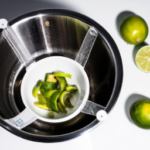Juice Tips and Tricks
How Many Limes For 1/4 Cup Juice
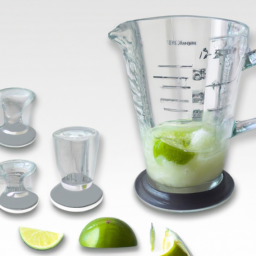
When life gives you limes, make lime juice! But determining how many limes are needed to make a quarter cup of lime juice is not as straightforward as you might think. The quantity of juice extracted from limes can vary depending on factors like their ripeness and size, as well as the juicing method used.
In this article, I will explore the science behind lime juice yield and provide you with some basic guidelines and tips for extracting maximum juice from your limes.
Additionally, I will discuss how to use lime juice in cooking, share some delicious recipes that feature lime juice, and touch upon the health benefits of this versatile citrus fruit.
So, whether you’re a seasoned chef or a novice in the kitchen, join me as we dive into the world of lime juice and all its wonders.
Key Takeaways
- The yield of lime juice depends on the ripeness, size, and juicing method of the limes.
- Rolling the limes on a hard surface before cutting and cutting them in half crosswise can help release more juice.
- Citrus juicers or reamers are the best tools for extracting juice, while hand squeezing produces high-quality juice with less pulp.
- Experimenting with different lime varieties can result in preferred flavors, and bottled lime or lemon juice can be used as substitutes if needed.
Factors That Affect Lime Juice Yield
Did you know that the amount of lime juice you can extract from a lime can vary greatly? The ripeness of the fruit and the juicing method used are two key factors that affect the yield of lime juice.
When it comes to lime juice extraction, the acidity of the lime is a key factor to consider. As limes ripen, they become less acidic and more bitter, which can affect the flavor of the juice. Therefore, if you want a more acidic juice, it’s best to use limes that are not fully ripe.
Additionally, the type of juicing method used can also affect the yield of juice. Hand-squeezing may not extract as much juice as using a juicer, but it can produce a higher quality juice with less pulp.
Now that we know the factors that can affect lime juice yield, let’s move on to some basic guidelines for getting the most juice out of your limes.
Basic Guidelines for Lime Juice Yield
When squeezing limes for juice, you’ll want to remember the age-old saying: "You can’t make a silk purse out of a sow’s ear."The same is true for lime juice measurements. If you start with poor quality limes, you won’t get much juice, no matter how hard you squeeze.
Here are some basic guidelines to follow when trying to get the most juice out of your limes:
- Choose ripe limes that are heavy for their size and have thin, smooth skin.
- Roll the limes on a hard surface before cutting them to help release the juices.
- Cut the limes in half crosswise, not lengthwise, to expose more juice.
- Use a citrus juicer or reamer to extract the juice, rather than squeezing by hand.
It’s also important to note that if you don’t have access to fresh limes, there are lime juice substitutes available, such as bottled lime juice or lemon juice. However, these alternatives may not provide the same flavor or acidity as fresh lime juice.
In the next section, we’ll discuss tools and techniques for extracting lime juice effectively.
Tools and Techniques for Extracting Lime Juice
To extract the most flavor from your ripe and smooth-skinned lime, try using a citrus juicer or reamer. There are several types of juicers available in the market that can make the task of extracting lime juice much easier.
The two most popular types are electric and manual juicers. Electric juicers are great for those who need to extract large quantities of juice quickly. They’re also convenient because they require minimal effort.
On the other hand, manual juicers are perfect for those who only need to extract small quantities of juice at home. These juicers are easy to use and generally less expensive than electric juicers. If you prefer to use your hands, you can try the hand squeezing technique.
It may take a little more time and effort, but it can be a great way to get the most out of your limes. With practice, you can learn the right amount of pressure and technique to extract the maximum amount of juice.
Maximizing lime juice yield requires some effort and technique. By using the right tools and techniques, you can extract the most flavor from your limes.
In the next section, we’ll discuss some tips that can help you get the most out of your limes.
Tips for Maximizing Lime Juice Yield
You can maximize the amount of lime flavor in your dishes by following these tips.
Firstly, it’s important to experiment with different lime varieties to find the one that suits your preferences. Some limes, such as the Persian lime, are seedless and juicier than others, making them ideal for juicing. On the other hand, key limes are smaller and have a more complex flavor that can add depth to your dishes.
Secondly, using a citrus press is more effective than a hand juicer for maximizing lime juice yield. A citrus press applies more pressure to the lime, extracting more juice than a hand juicer. Additionally, it separates the pulp and seeds from the juice, resulting in a smoother texture. However, if you don’t have a citrus press, a hand juicer can still be effective in extracting lime juice. It just requires more effort and may not yield as much juice as a citrus press.
By using these tips, you can ensure that you’re getting the most out of your limes and adding the perfect amount of tang to your dishes.
When it comes to using lime juice in cooking, there are a variety of ways to incorporate this flavorful ingredient.
Using Lime Juice in Cooking
Get ready to add a burst of refreshing flavor to your dishes with lime juice – it’s a versatile ingredient that can elevate the taste of your meals in no time! Lime juice is a popular ingredient used in a variety of dishes, from marinades and dressings to cocktails and desserts.
But, what if you don’t have any lime juice on hand? There are a few lime juice substitutes that you can use in a pinch, such as lemon juice or vinegar. However, keep in mind that these substitutes will alter the flavor profile of your dish, so it’s best to use them only if absolutely necessary.
When it comes to storing lime juice, it’s important to keep it in an airtight container in the refrigerator. Lime juice can go bad quickly, so it’s best to use it within a few days of juicing. If you need to store lime juice for longer than a few days, consider freezing it in an ice cube tray for later use. This way, you can simply pop out a cube or two when you need it, without worrying about the juice going bad.
With these tips, you can make sure that your lime juice stays fresh and ready for your next culinary adventure.
Are you ready to start cooking with lime juice? In the next section, we’ll explore some delicious recipes that use lime juice to add a zesty kick to your meals.
Recipes That Use Lime Juice
Explore the world of zesty flavors with these delicious recipes that incorporate the refreshing taste of lime. Lime juice is a versatile ingredient that can be used in various types of cuisines.
One of the most popular uses of lime juice is in cocktails. A classic margarita is made by combining tequila, lime juice, and orange liqueur, served over ice with a salt-rimmed glass. Other popular lime juice cocktails include the mojito, caipirinha, and daiquiri.
If you don’t have lime juice on hand, you can substitute it with other citrus juices such as lemon or grapefruit juice. Lime juice can also be used in savory dishes such as ceviche, a Latin American dish made with raw fish marinated in lime juice and spices. Lime juice can also be used in dressings, marinades, and sauces to add a tangy flavor to your dishes.
Lime juice not only adds flavor to your dishes but also has several health benefits. It’s a good source of vitamin C, which helps boost your immune system and fight off infections. Lime juice also contains antioxidants that help protect your cells from damage caused by free radicals.
With so many uses and health benefits, lime juice is a must-have ingredient in any kitchen.
Health Benefits of Lime Juice
Did you know that incorporating lime juice into your diet can boost your immune system and protect your cells from damage with its high vitamin C and antioxidant content? Lime juice is also low in calories and sugar, making it a great addition to any diet.
Let’s take a closer look at the nutritional value of lime juice. One ounce (30 ml) of lime juice contains approximately 8% of the recommended daily intake of vitamin C. This powerful antioxidant helps fight off infections and diseases, and also supports the growth and repair of tissues in the body. Lime juice also contains flavonoids, which have anti-inflammatory properties and may help reduce the risk of chronic diseases such as heart disease and cancer. However, it is important to note that consuming too much lime juice can lead to potential side effects such as heartburn, nausea, and diarrhea. It is recommended to consume lime juice in moderation and talk to a healthcare provider if any adverse effects occur.
With its numerous health benefits, it’s no wonder lime juice is a popular ingredient in many recipes. But did you know there are also different variations on lime juice? Let’s explore some creative ways to use this versatile citrus fruit.
Variations on Lime Juice
You may be surprised to learn that lime juice can come in different forms, like lime zest and lime oil. Lime zest is the grated outer layer of the lime skin, which contains the flavorful oils and aroma. Lime oil is extracted from the peel through a process of steam distillation.
Both of these variations can add a burst of citrus flavor to your recipes like a ray of sunshine on a cloudy day. Lime zest is often used to garnish cocktails or add flavor to baked goods, while lime oil is used in marinades and salad dressings.
When it comes to cocktail recipes, lime juice is a staple ingredient in many classics like the Margarita and the Daiquiri. However, if you’re looking to switch things up, there are alternative citrus juices that can be used in place of lime juice. Lemon juice can provide a similar tangy flavor, while grapefruit juice can add a slightly bitter note.
Experimenting with different citrus juices can lead to new and exciting cocktail creations.
As we move into discussing lime juice in popular culture, it’s interesting to note how its variations have played a role in the culinary world.
Lime Juice in Popular Culture
Lime juice has made its mark in popular culture through its use in classic cocktails and as a versatile ingredient in various cuisines. Margaritas, mojitos, and daiquiris are just a few examples of lime juice cocktails that have become staples in bars and restaurants around the world. The acidity and bright flavor of lime juice make it a perfect addition to many mixed drinks, providing a refreshing and tangy kick that complements the other ingredients.
But lime juice’s influence on popular culture goes beyond just the bar scene. It has also made its way into music, with numerous songs referencing the beloved citrus fruit. From the Beatles’ "Lucy in the Sky with Diamonds"to Beyonce’s "Formation,"lime juice has been mentioned in a variety of genres and styles. This further highlights the widespread appeal and impact of lime juice in our society.
| Lime Juice in Popular Culture | Examples | Significance | ||||
|---|---|---|---|---|---|---|
| Cocktails | Margarita, Mojito, Daiquiri | Versatile ingredient in mixed drinks | ||||
| Music | "Lucy in the Sky with Diamonds,""Formation" | Referenced in various music genres | Food | Key lime pie, ceviche | Key ingredient in traditional dishes |
Frequently Asked Questions
How many calories are in 1/4 cup of lime juice?
A quarter cup of lime juice contains approximately 15 calories. Consuming lime juice can provide numerous benefits such as aiding digestion, boosting immunity, and preventing kidney stones. The recommended serving size of lime juice is 1-2 tablespoons per day.
Can lime juice be substituted for lemon juice in a recipe?
Lime vs. Lemon: Taste Test reveals that lime juice can be used as a substitute for lemon juice in recipes, but it may alter the taste slightly. Cooking with Citrus: Tips and Tricks suggest adjusting the amount of juice to taste.
What is the best way to store leftover lime juice?
When it comes to storing lime juice, it’s important to use proper preservation techniques to ensure maximum freshness. The best method is to transfer the juice into an airtight container and store it in the refrigerator for up to a week.
Is lime juice acidic or alkaline?
Lime juice is highly acidic with a pH of around 2.0, making it an effective ingredient in skincare due to its ability to dissolve dead skin cells. Lime juice benefits include aiding digestion and providing vitamin C.
How long does it take for a lime to produce juice after being cut open?
Juice extraction time for limes varies depending on the lime variety and ripeness. When cut open, limes can produce juice immediately or take a few minutes to yield maximum juice. Factors such as temperature, pressure, and juicing technique can also affect juice extraction.
Conclusion
In conclusion, the amount of limes needed to produce 1/4 cup of juice can vary depending on multiple factors such as the size and juiciness of the lime. However, by following basic guidelines and using the right tools and techniques, one can maximize their lime juice yield and enjoy its numerous health benefits.
As I was squeezing limes for a recipe, I couldn’t help but notice how each lime was like a tiny, tart treasure waiting to be unlocked. Just like how every lime has its own unique flavor and juice yield, we all have our own unique strengths and abilities waiting to be utilized.
By finding the right tools and techniques to unlock our potential, we too can maximize our yield and enjoy the sweet rewards of success. So go forth and squeeze those limes, and see what hidden treasures await.
Susannah expertise lies in researching and compiling evidence-based content on juicing, nutrition, and overall health. She is committed to ensuring that The Juicery World offers accurate, up-to-date, and trustworthy information to empower readers to take control of their health. Susannah’s goal is to inspire individuals to embrace juicing as a way to nourish their bodies and live their best lives.
Juice Tips and Tricks
How to Make Aloe Vera Juice Taste Better

Tired of the strong flavor of aloe vera juice? No problem, we’ve got the answer for you.
In this article, we’ll share some tips and tricks to make your aloe vera juice taste better. We have tried and tested various methods to enhance the flavor without compromising the health benefits.
From choosing the right juice to adding natural sweeteners and infusing with fruits and herbs, we’ve got all the information you need to transform your aloe vera juice into a delightful and refreshing beverage.
Let’s dive in!
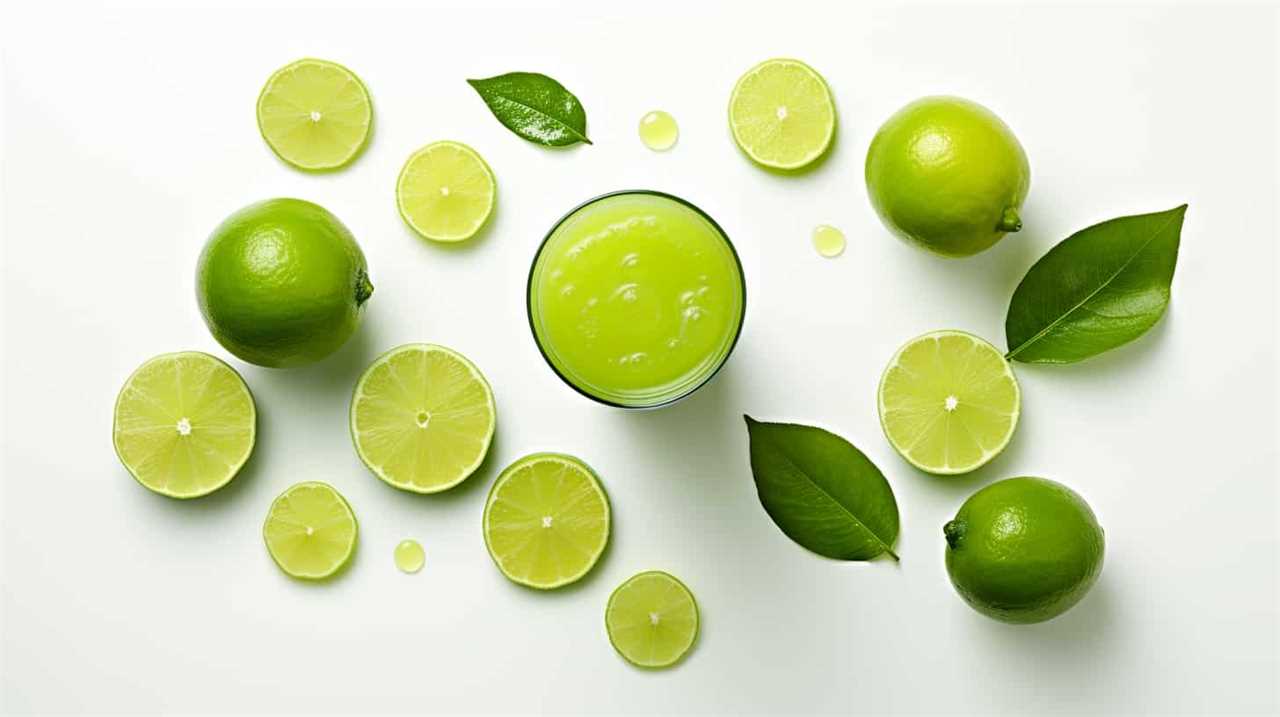
Key Takeaways
- Choose a reputable brand of aloe vera juice that prioritizes quality and uses organic, pure aloe vera.
- Avoid brands that contain added sugars or artificial ingredients.
- Use natural sweeteners like honey, agave syrup, or stevia to enhance the taste of aloe vera juice.
- Experiment with adding fruits, herbs, and other juices to create unique flavor combinations and enhance the health benefits of aloe vera juice.
Choosing the Right Aloe Vera Juice
We can enhance our experience with aloe vera juice by selecting the right brand and type for our preferences. When it comes to finding a reputable brand, it’s important to do some research and read reviews from other consumers. Look for brands that prioritize quality and use organic, pure aloe vera without any added sugars or artificial ingredients. Understanding the health benefits of aloe vera juice is also crucial in making the right choice. Aloe vera is known for its soothing properties, aiding digestion, promoting skin health, and boosting the immune system. By choosing a high-quality brand, we can ensure that we’re getting the maximum benefits from our aloe vera juice.
Now that we know how to choose the right brand, let’s move on to the next step of adding natural sweeteners.
Adding Natural Sweeteners
To enhance the flavor of our aloe vera juice, we can add natural sweeteners such as honey or agave syrup. Using alternative sweeteners not only adds sweetness but also brings unique flavors to the juice. Here are some options to consider:
- Stevia: A natural sweetener derived from the Stevia plant, it’s a zero-calorie alternative to sugar.
- Maple Syrup: This natural sweetener adds a rich and earthy flavor to the aloe vera juice.
- Dates: Pureed dates can be used to sweeten the juice while also providing essential nutrients like fiber.
In addition to using alternative sweeteners, we can enhance the flavor of aloe vera juice by adding spices and extracts. Cinnamon, ginger, or vanilla extract can add warmth and depth to the taste. By experimenting with different combinations of these natural sweeteners, spices, and extracts, we can create a flavor profile that suits our preferences.
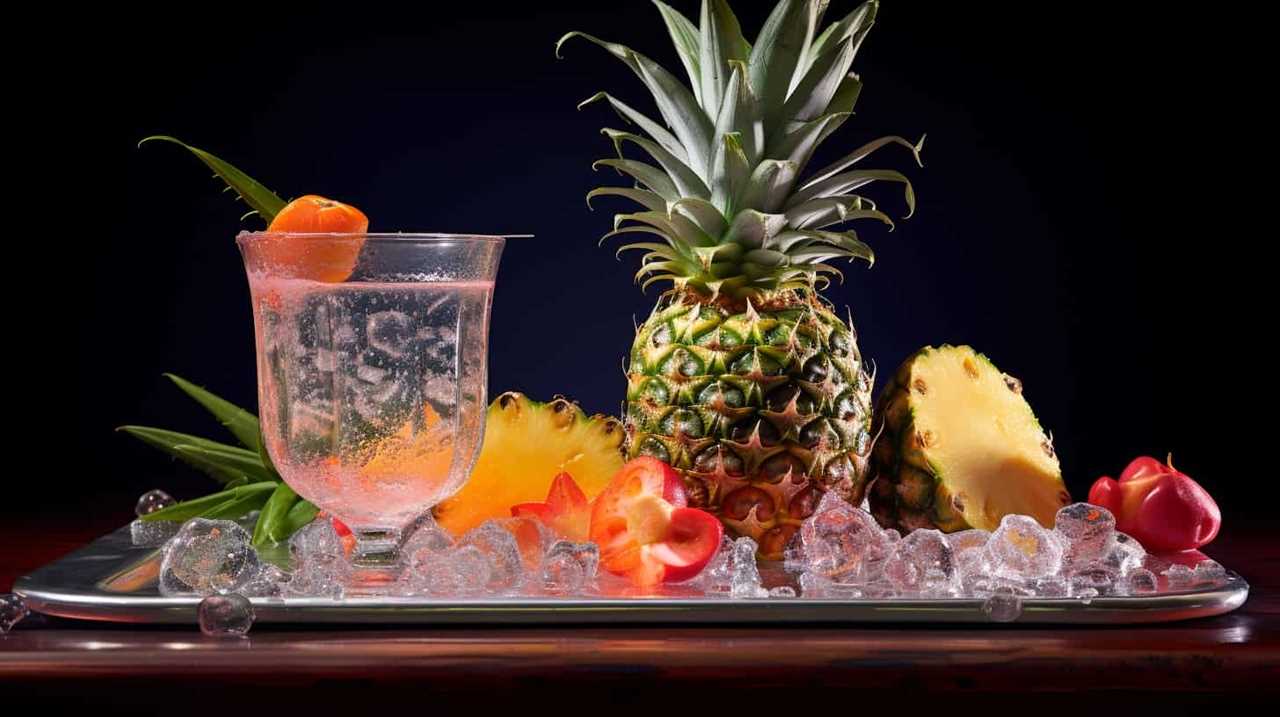
Now, let’s move on to the next section and learn how to infuse aloe vera juice with fruits and herbs to further enhance its taste.
Infusing With Fruits and Herbs
As we explore ways to make our aloe vera juice taste better, one option to consider is infusing it with fruits and herbs. Creating unique aloe vera blends by adding fruits and herbs not only enhances the flavor but also adds a touch of freshness and complexity to the juice.
Fruits like strawberries, pineapple, or citrus can add a burst of sweetness, while herbs like mint, basil, or ginger can provide a subtle yet refreshing twist. Exploring the benefits of herbal infusions can also be beneficial for our health. For example, adding a few sprigs of lavender can promote relaxation and reduce stress. Additionally, infusing aloe vera juice with rosemary can aid digestion and boost the immune system.
Blending With Other Juices
Let’s try mixing aloe vera juice with different fruit juices to create delicious and refreshing blends. Blending aloe vera juice with other fruits not only enhances its taste but also adds nutritional benefits to your drink. Here are three fruit juices that you can mix with aloe vera juice:

- Orange juice: Combining aloe vera juice with orange juice not only adds a tangy flavor but also boosts your intake of vitamin C, which is essential for a strong immune system.
- Pineapple juice: Mixing aloe vera juice with pineapple juice creates a tropical blend that isn’t only refreshing but also helps in digestion. Pineapple contains bromelain, an enzyme that aids in breaking down proteins and promoting better digestion.
- Watermelon juice: Blending aloe vera juice with watermelon juice creates a hydrating and refreshing combination. Watermelon is rich in water content and contains electrolytes that can help replenish your body’s fluids.
Experimenting With Flavor Combinations
While we can try various flavor combinations with aloe vera juice, it’s important to find the right balance to enhance its taste. Experimenting with different flavors can’t only make the juice more enjoyable but also enhance its health benefits.
Aloe vera juice is known for its numerous health benefits, such as boosting digestion, promoting hydration, and supporting the immune system. By adding complementary flavors, we can create a refreshing summer drink that not only tastes great but also provides a nutritional boost.
Some popular flavor combinations include mixing aloe vera juice with citrus fruits like lemon or orange, adding a splash of coconut water for a tropical twist, or combining it with cucumber and mint for a refreshing and cooling effect.
Don’t be afraid to get creative and find the flavor combination that suits your taste buds best!
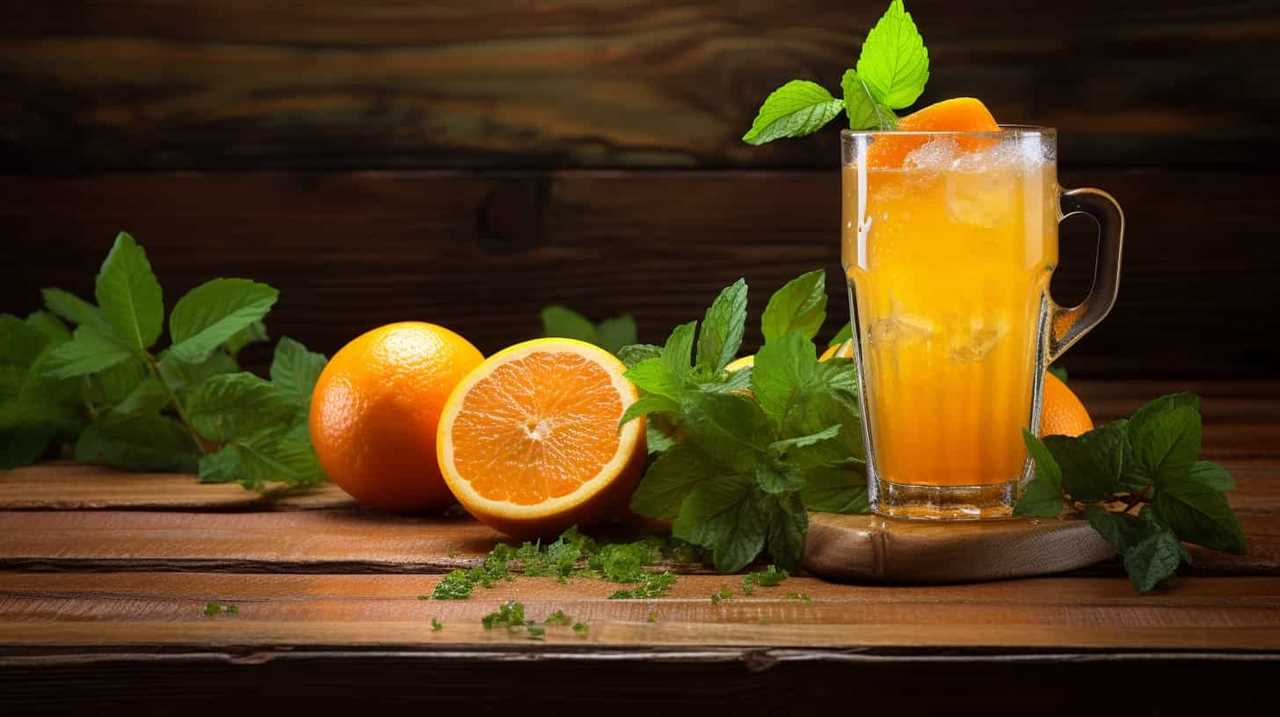
Frequently Asked Questions
Can I Use Store-Bought Aloe Vera Gel Instead of Fresh Aloe Vera for Making Juice?
Yes, you can use store-bought aloe vera gel instead of fresh aloe vera for making juice. However, it’s important to note that fresh aloe vera juice may have more health benefits due to its higher nutrient content.
How Long Can I Store Aloe Vera Juice in the Refrigerator?
Aloe vera juice can be stored in the refrigerator for up to a week. Refrigeration helps maintain the longevity and freshness of the juice, preserving its beneficial properties.
Can Aloe Vera Juice Help With Digestive Issues?
Aloe vera juice can potentially help with digestive issues when taken in appropriate dosages. However, it is important to note that there may be potential side effects. It is always best to consult with a healthcare professional before starting any new supplement regimen.
Can I Use Artificial Sweeteners Instead of Natural Sweeteners in My Aloe Vera Juice?
Using artificial sweeteners in aloe vera juice may affect its taste and potential health benefits. However, natural sweeteners like honey or stevia can enhance the flavor without compromising its nutritional value.

Is It Safe to Drink Aloe Vera Juice Every Day?
Drinking aloe vera juice daily can have numerous benefits, such as improving digestion and boosting the immune system. However, consuming it regularly may also lead to potential side effects like diarrhea or stomach cramps.
Conclusion
In conclusion, making aloe vera juice taste better is easy and enjoyable.
By choosing the right aloe vera juice and adding natural sweeteners, infusing with fruits and herbs, blending with other juices, and experimenting with flavor combinations, you can create a delightful and refreshing drink.
So go ahead and unleash your creativity in the kitchen, and transform your aloe vera juice into a sensational elixir that will transport your taste buds to paradise.
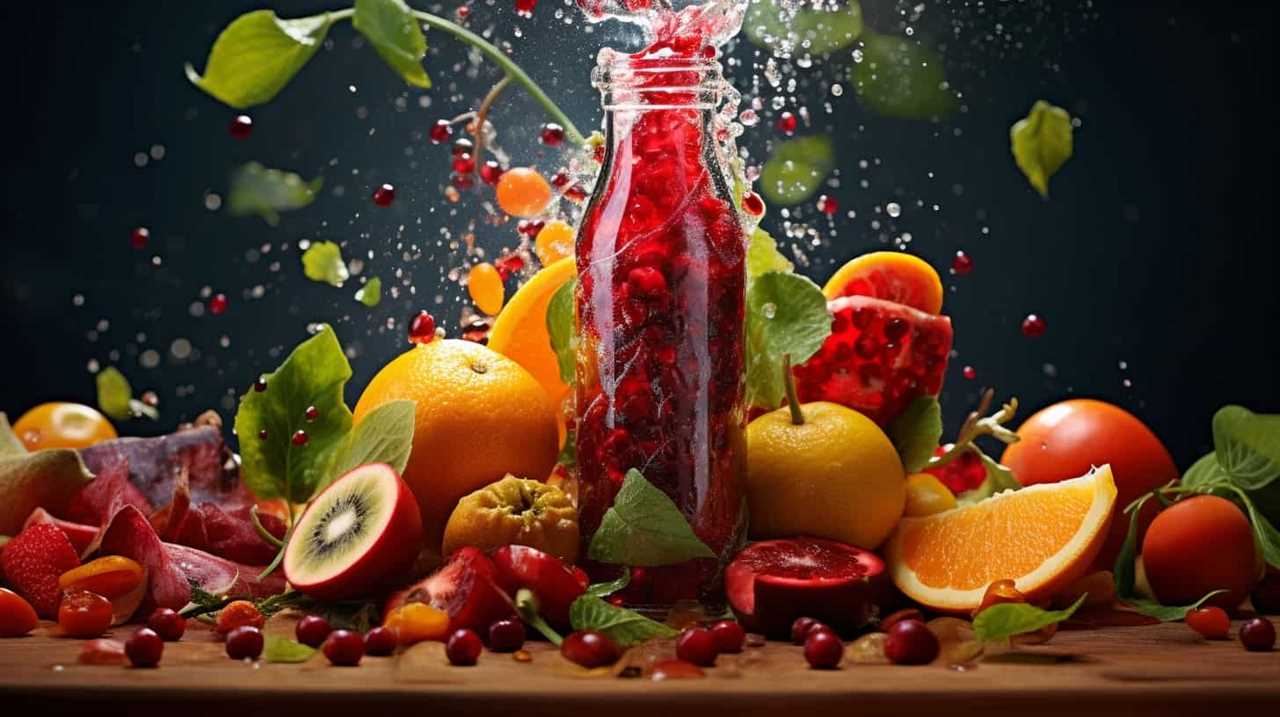
Susannah expertise lies in researching and compiling evidence-based content on juicing, nutrition, and overall health. She is committed to ensuring that The Juicery World offers accurate, up-to-date, and trustworthy information to empower readers to take control of their health. Susannah’s goal is to inspire individuals to embrace juicing as a way to nourish their bodies and live their best lives.
Juice Tips and Tricks
How to Make a Glass of Lemonade With Bottled Lemon Juice

Are you craving a cool glass of lemonade to quench your thirst? Look no further! Try out our perfect recipe using bottled lemon juice that will surely please your taste buds.
In this article, we’ll guide you through the process of creating a tangy and sweet concoction that will leave you feeling refreshed and satisfied.
So grab your ingredients and let’s get started on this delightful journey of serving ourselves and others a glass of pure lemony goodness.
Key Takeaways
- Consider the storage of the bottled lemon juice (dark glass or plastic bottles, protect from light exposure, check expiration date)
- Choose a suitable pitcher and fresh lemons for enhanced flavor
- Store the lemonade concentrate in the refrigerator to maintain freshness
- Adjust the sweetness and tartness to taste with sugar or more lemon juice, and experiment with different sweeteners or additional flavors.
Choosing the Right Bottled Lemon Juice
What are the key factors we should consider when selecting the right bottled lemon juice for our lemonade?

One important factor is how the lemon juice is stored. Look for bottles that are made of dark glass or plastic, as they help protect the juice from light exposure, which can degrade its quality. It’s also important to check the expiration date to ensure freshness.
Another benefit of using bottled lemon juice is convenience. It saves time and effort compared to squeezing fresh lemons. Additionally, bottled lemon juice provides consistent flavor, as the acidity levels are standardized.
When selecting a brand, consider reading reviews and checking for certifications, such as organic or non-GMO.
Gathering the Necessary Ingredients and Tools
How can we gather all the necessary ingredients and tools to make a glass of lemonade with bottled lemon juice?
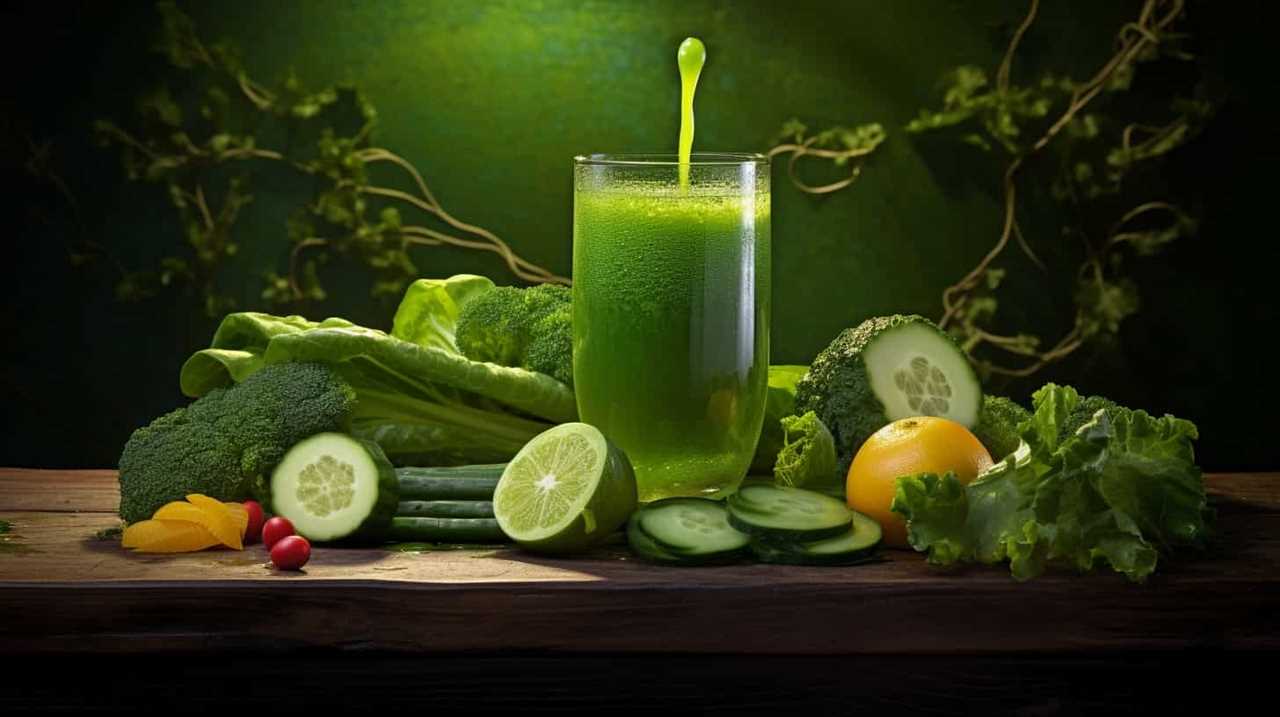
It’s important to start with the right pitcher. Look for a pitcher that’s made of glass or BPA-free plastic, as these materials won’t affect the taste of the lemonade. The pitcher should also have a lid or cover to keep the lemonade fresh and prevent spills.
Now, let’s talk about the lemons. While bottled lemon juice is convenient, using fresh lemons instead can elevate the flavor of your lemonade. Choose lemons that are firm and have a bright yellow color. Give them a gentle squeeze to ensure they’re juicy. To extract the juice, you’ll need a citrus juicer or a reamer. These tools make it easy to get every last drop of juice from the lemons.
Mixing the Lemonade Concentrate
To start mixing the lemonade concentrate, we’ll slowly pour the bottled lemon juice into the pitcher. It’s important to choose the right container for the lemonade concentrate. A pitcher with a lid or a tightly sealed container will help maintain the freshness and prevent any spills or leaks. Once the lemon juice is in the pitcher, we can move on to the next step of adding water and sweetener.
To ensure the lemonade concentrate stays fresh, it’s essential to store it properly. Keep the pitcher in the refrigerator to maintain its cool temperature and prevent any bacteria growth. If you have any leftover concentrate, transfer it to a smaller container with an airtight lid before refrigerating. This will help retain its flavor and prevent any contamination.
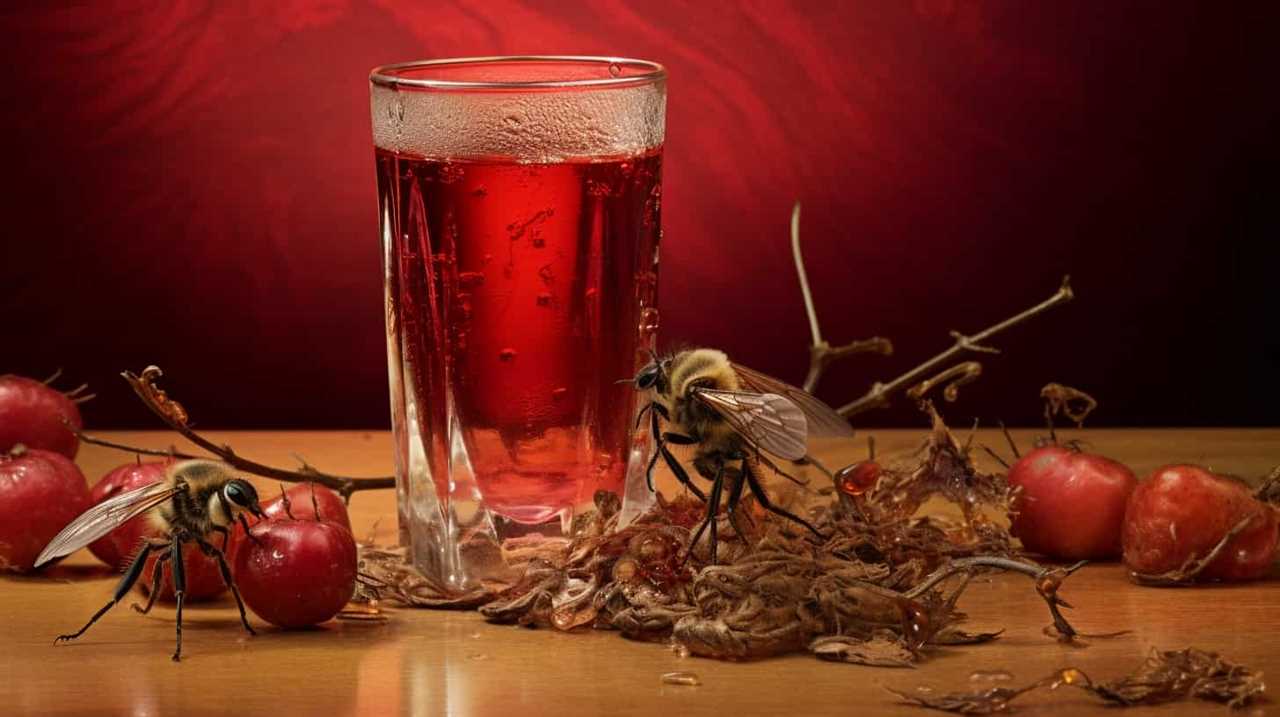
Now that we’ve mixed the lemonade concentrate, it’s time to adjust the sweetness and tartness to taste.
Adjusting the Sweetness and Tartness to Taste
We can adjust the sweetness and tartness of the lemonade to taste by adding more sugar or lemon juice, respectively. If you prefer a sweeter lemonade, simply add more sugar and stir until it dissolves completely. You can experiment with different sweeteners such as honey or agave syrup to find the perfect balance of sweetness.
On the other hand, if you want a tangier lemonade, add more lemon juice gradually, tasting as you go until it reaches your desired level of tartness.
Additionally, you can get creative with your lemonade by adding flavors like fresh mint leaves or a hint of lavender. These additions can elevate the flavor profile and create a more refreshing and unique experience.

Now that we’ve adjusted the sweetness and tartness of our lemonade, let’s move on to serving and enjoying your refreshing glass of lemonade.
Serving and Enjoying Your Refreshing Glass of Lemonade
Now let’s sit back, relax, and savor our refreshing glass of lemonade.
When it comes to serving and enjoying this delightful drink, there are a few techniques and garnishing options to consider.
Firstly, serving your lemonade chilled is essential for maximum enjoyment. Ensure that you have chilled glasses or add ice cubes to the glasses before pouring the lemonade.

To add a touch of elegance, you can garnish your lemonade with a slice of lemon on the rim of the glass. For an extra burst of flavor, you could also add a sprig of fresh mint or a few berries.
Remember to gently stir the lemonade before serving to evenly distribute the flavors.
Now, take a sip, feel the refreshing tang of lemon, and let the sweet and tart flavors dance on your taste buds.
Cheers!
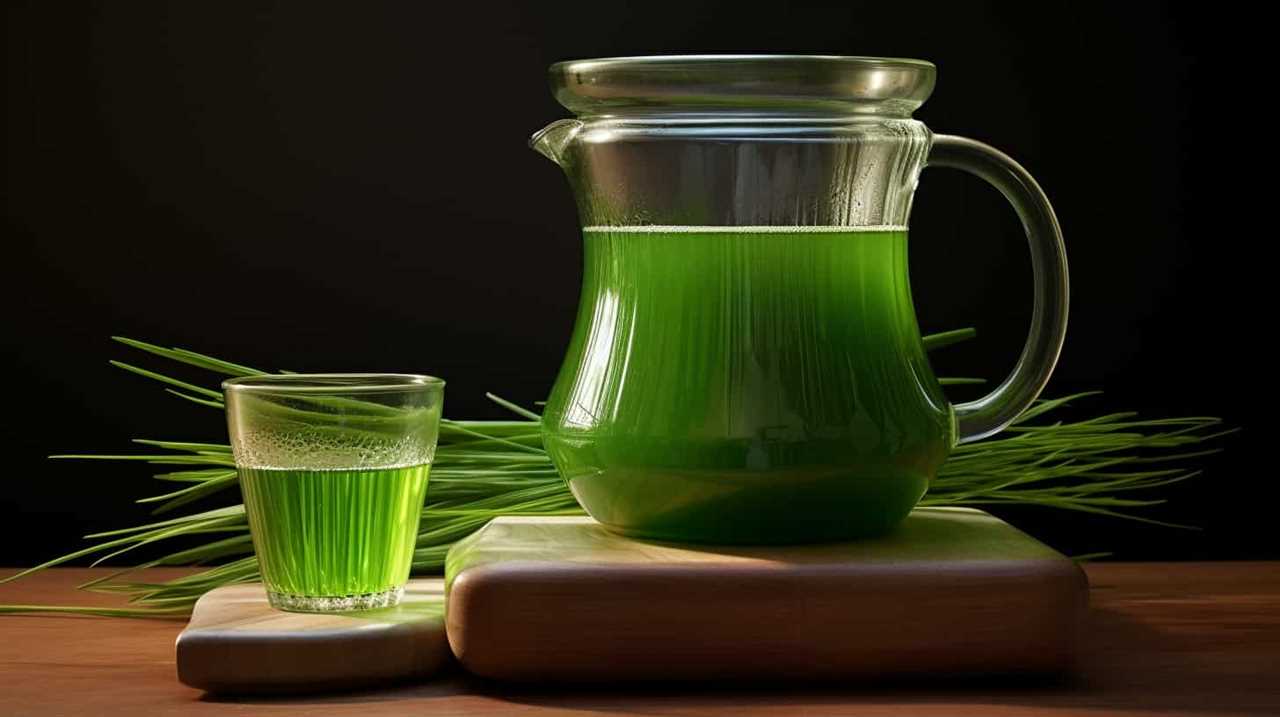
Frequently Asked Questions
Can I Use Fresh Lemons Instead of Bottled Lemon Juice?
Fresh lemons offer numerous benefits over bottled lemon juice. The taste of fresh lemons is unparalleled, providing a vibrant and tangy flavor. Incorporating fresh lemons into your lemonade will elevate its taste and give it a refreshing and authentic twist.
Can I Substitute Sugar With a Different Sweetener?
Substituting sweeteners in lemonade can enhance the flavor and offer health benefits. We’re knowledgeable about alternative sweeteners and can provide precise, detailed instructions on using them in place of sugar.
How Long Does the Lemonade Concentrate Need to Chill in the Refrigerator?
The chilling time for the lemonade concentrate in the refrigerator is typically around 1-2 hours. Using bottled lemon juice offers the benefit of convenience and consistent flavor for a refreshing glass of lemonade.
Can I Add Other Fruits or Flavors to the Lemonade?
Sure, we can definitely add different fruits or flavors to our lemonade. It’s a great way to experiment with unique flavors and create refreshing, personalized drinks. The possibilities are endless!

How Long Does the Lemonade Stay Fresh in the Refrigerator?
Lemonade made with bottled lemon juice can stay fresh in the refrigerator for about 5-7 days. To maximize shelf life, store it in an airtight container and keep it chilled.
Conclusion
And so, with a few simple steps and the right ingredients, a glass of refreshing lemonade is born.
Like a symphony of flavors dancing on your taste buds, this tangy elixir quenches thirst and brings joy on a hot summer day.
Just a sip transports you to a world of citrusy delight, where the sweetness and tartness blend harmoniously.

So go ahead, indulge in the art of lemonade-making and savor every drop of this sun-kissed nectar.
Cheers to the perfect glass of lemonade!
Susannah expertise lies in researching and compiling evidence-based content on juicing, nutrition, and overall health. She is committed to ensuring that The Juicery World offers accurate, up-to-date, and trustworthy information to empower readers to take control of their health. Susannah’s goal is to inspire individuals to embrace juicing as a way to nourish their bodies and live their best lives.
Juice Tips and Tricks
How to Know if Orange Juice Is Bad

We’ve all been in that situation before – reaching for a glass of orange juice and hesitating, unsure if it’s still okay to drink. Fear not! This article will give you the knowledge you need to determine for sure if your orange juice is still fresh or if it’s gone bad.
With a blend of scientific precision and practical tips, we’ll explore color changes, strange smells, off taste, texture changes, and mold or growth that may indicate spoilage.
Let’s dive in and serve ourselves a refreshing glass of certainty!
Key Takeaways
- Color changes in orange juice can indicate a loss of freshness and shelf life extension, but it doesn’t necessarily mean the juice is bad.
- Unusual or off-putting odors in orange juice, such as sour or fermented scents, can be a sign of poor quality.
- An off taste in orange juice, such as sour, bitter, or fermented flavors, suggests that the juice is spoiled.
- Texture changes in orange juice, such as pulp separation or a thicker consistency, can occur as the juice ages, so it’s important to consume it before the expiration date.
Color Changes in Orange Juice
We should be aware that color changes can indicate whether orange juice is bad.

When it comes to orange juice, color is a crucial factor to consider. As oranges are exposed to air, an oxidation process occurs, which leads to changes in color. Fresh orange juice has a vibrant orange hue, indicating its freshness and high nutritional value.
However, as time passes, the juice may undergo a color change, turning dull or brownish. This change in color is a result of the oxidation process, which affects the flavor and quality of the juice. It’s important to note that while a change in color doesn’t necessarily mean the juice is bad, it does indicate that the juice is losing its freshness and shelf life extension.
Therefore, it’s advisable to consume orange juice when it’s at its freshest, as indicated by its vibrant orange color.
Strange Smells in Orange Juice
When it comes to evaluating orange juice, we should be cautious of any strange smells or odors. A fresh, pleasant smell is indicative of good quality orange juice. However, if you notice any unusual or off-putting odors, it may be a sign that the juice has gone bad. These smells can range from a sour or fermented scent to a rancid or moldy aroma.

It’s important to note that while some natural variations in scent can occur due to the specific variety of oranges used, any strong or unpleasant smells should raise concerns. If you have citrus fruit allergies, it’s especially important to pay attention to the smell of orange juice, as it could indicate the presence of spoilage or contamination.
Ensuring the quality of orange juice is essential as it’s a popular beverage known for its health benefits, including being rich in vitamin C and antioxidants.
Off Taste of Orange Juice
Our taste buds can detect even the slightest hint of an off taste in orange juice, which can indicate that it has gone bad. The taste of orange juice should be fresh, tangy, and slightly sweet. If it tastes sour, bitter, or fermented, it’s likely spoiled.
One common cause of an off taste in orange juice is the use of overripe oranges. When oranges become overripe, their flavor profile changes, resulting in a less pleasant taste. Another factor to consider is the expiration date. Orange juice that has passed its expiration date is more likely to develop an off taste. It’s important to check the expiration date before consuming orange juice to ensure its freshness and quality.
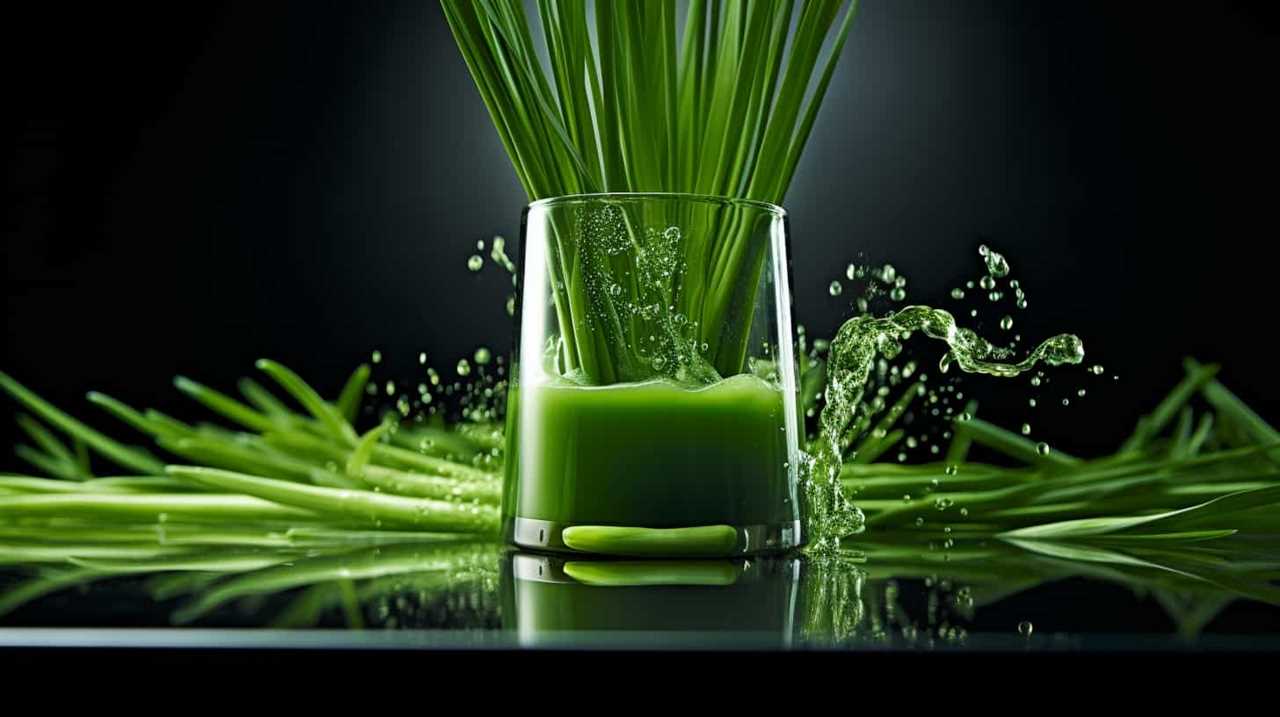
Now, let’s move on to discuss the texture changes in orange juice.
Texture Changes in Orange Juice
As we explore the texture changes in orange juice, it’s important to note that certain factors can cause it to become thicker or develop sediment. One common texture change in orange juice is pulp separation, where the pulp separates from the liquid and settles at the bottom. This can occur naturally over time, as the pulp particles become denser and sink.
Another factor that can affect the texture of orange juice is the expiration date. As orange juice ages, it may start to develop a thicker consistency and even form sediment. This is a result of the natural breakdown of the juice’s components. Therefore, it’s crucial to check the expiration date on orange juice and consume it before it reaches its expiration date to avoid any undesirable texture changes.
Mold or Growth in Orange Juice
We need to be aware of the possibility of mold or other growth occurring in orange juice. Mold can develop in orange juice if it isn’t stored properly or if it has passed its expiration date.
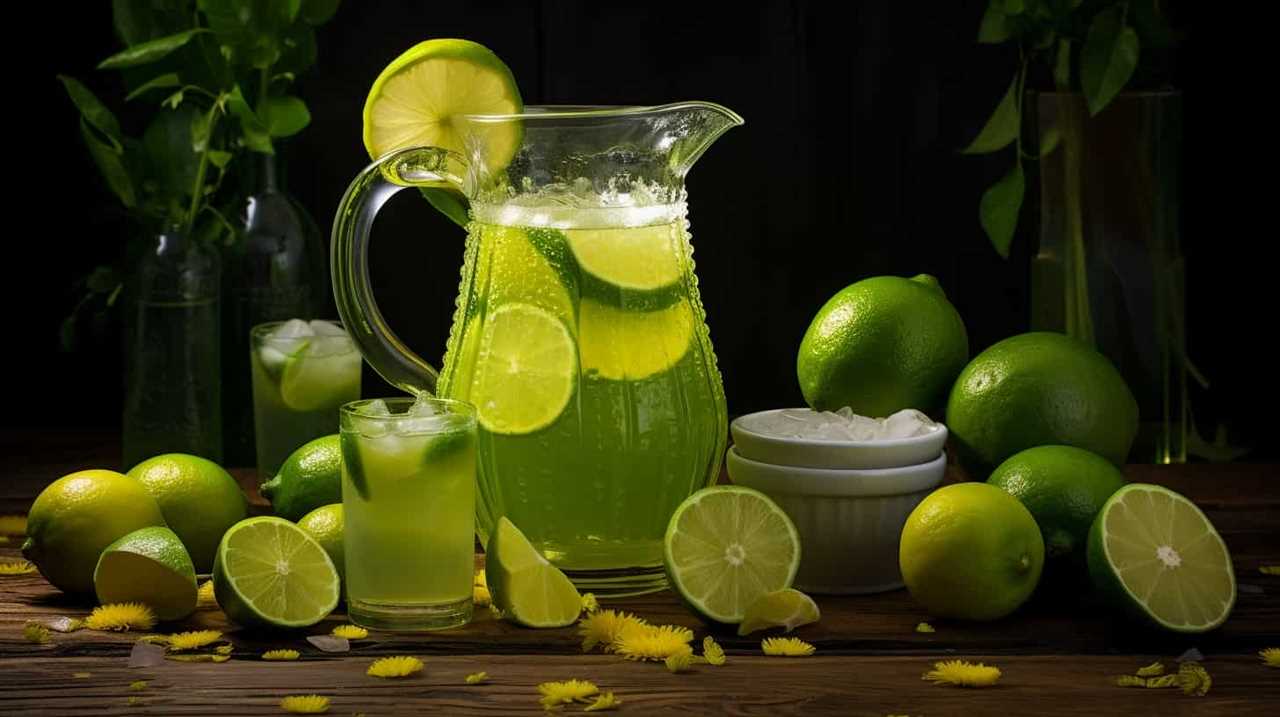
To prevent mold growth, it’s important to follow these steps:
- Store orange juice in the refrigerator at a temperature below 40°F (4°C).
- Check the expiration date on the bottle before consuming. Discard any orange juice that has expired.
- Keep the container tightly sealed to prevent air and moisture from entering, as these can promote mold growth.
Regularly inspecting orange juice for any signs of mold or unusual growth is essential. If you notice any discoloration, a strange odor, or visible mold, it’s best to discard the juice to avoid any potential health risks.
Frequently Asked Questions
Can Orange Juice Go Bad if It’s Stored in the Freezer for Too Long?
Frozen orange juice can potentially lose its nutrients and change its taste if stored in the freezer for too long. It is important to check for signs of spoilage before consuming it.
How Long Can Orange Juice Stay Fresh in the Refrigerator Once It’s Opened?
Once opened, orange juice can stay fresh in the refrigerator for about 7-10 days. To maintain its freshness, store it properly by keeping it tightly sealed and at a consistently cold temperature.
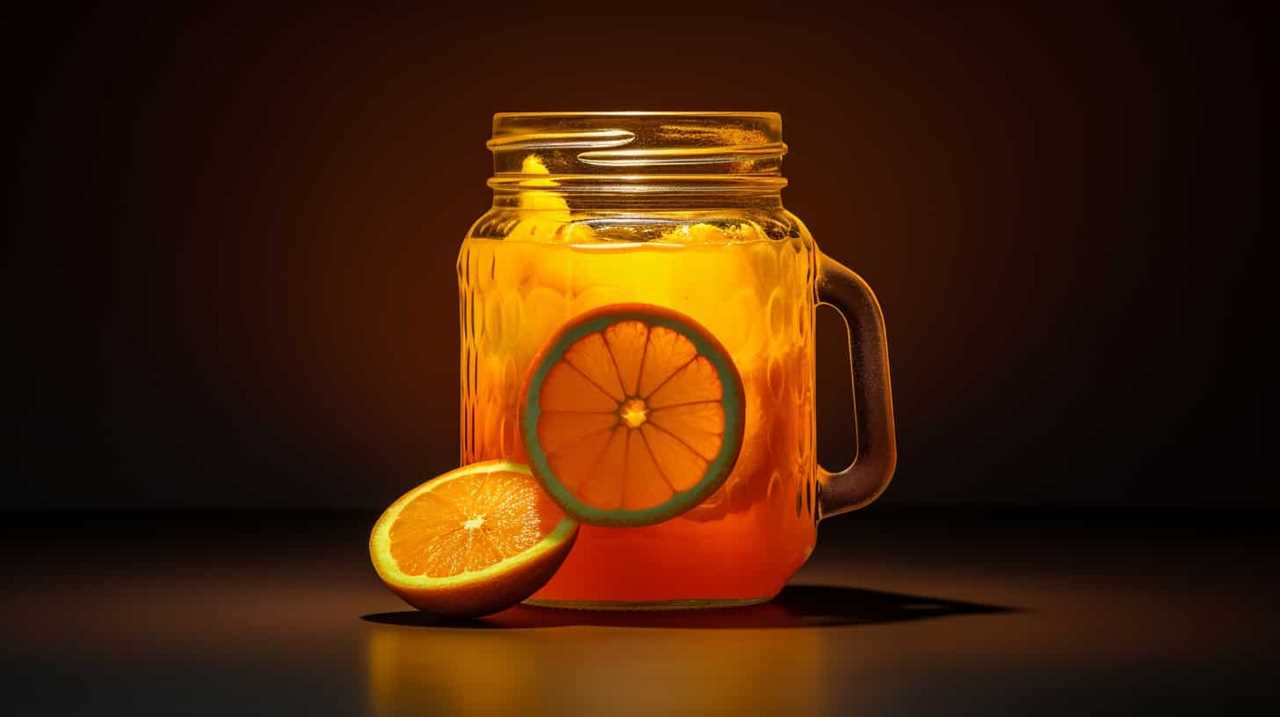
Is It Safe to Consume Orange Juice That Has Been Left Out at Room Temperature Overnight?
Left out orange juice may not be safe to drink as it can harbor harmful bacteria. Signs of spoiled orange juice include a sour smell, mold growth, and a change in color or taste.
Can Orange Juice Develop Harmful Bacteria if It’s Past Its Expiration Date but Still Looks and Smells Fine?
Orange juice can cause food poisoning if it develops harmful bacteria, even if it looks and smells fine. Signs of spoiled orange juice include a sour smell, mold growth, and a change in color or taste.
Does the Nutritional Value of Orange Juice Decrease as It Starts to Go Bad?
As orange juice goes bad, its nutritional value decreases. The longer it sits on the shelf, the more nutrients it loses. Signs of spoilage include a sour smell, off taste, and mold growth.
Conclusion
In conclusion, determining if orange juice is bad requires careful observation of color changes, strange smells, off taste, and texture changes. Just like a detective investigating a case, we must rely on our senses to detect any signs of spoilage.
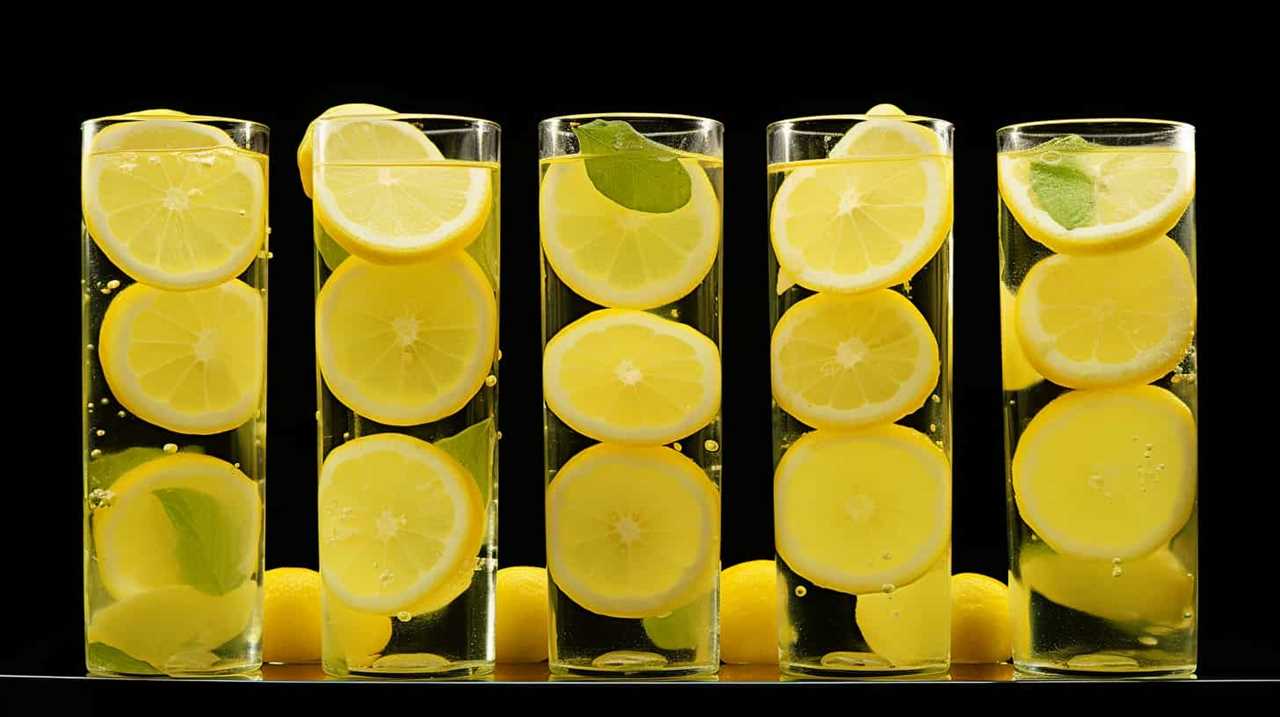
If we detect mold or growth in the orange juice, it’s a clear indication that it’s no longer safe to consume. By remaining vigilant and attuned to these indicators, we can ensure that our orange juice is always fresh and enjoyable.
Susannah expertise lies in researching and compiling evidence-based content on juicing, nutrition, and overall health. She is committed to ensuring that The Juicery World offers accurate, up-to-date, and trustworthy information to empower readers to take control of their health. Susannah’s goal is to inspire individuals to embrace juicing as a way to nourish their bodies and live their best lives.
-

 Juice Tips and Tricks3 months ago
Juice Tips and Tricks3 months agoHow Much Lemon Juice Is Equal To Half A Lemon
-

 Juice Tips and Tricks3 months ago
Juice Tips and Tricks3 months agoHow Much Lemon Juice Concentrate Equals One Lemon
-

 Juice Tips and Tricks3 months ago
Juice Tips and Tricks3 months agoHow Long Can You Drink Orange Juice After The Expiration Date
-

 Fruit Juice Varieties2 months ago
Fruit Juice Varieties2 months agoTop 11 Most Loved Fruit Juice Varieties
-

 Juice Tips and Tricks3 months ago
Juice Tips and Tricks3 months agoHow Much Lemon Juice Is Equivalent To 1 Lemon
-

 Organic and Natural Juices2 months ago
Organic and Natural Juices2 months ago8 Best Organic Brands for Fruit Juice
-

 Juice Tips and Tricks3 months ago
Juice Tips and Tricks3 months agoHow Much Lemon Juice Is Equivalent To One Lemon
-

 Juice Tips and Tricks3 months ago
Juice Tips and Tricks3 months agoHow Long Do You Need To Drink Pineapple Juice Before Oral




